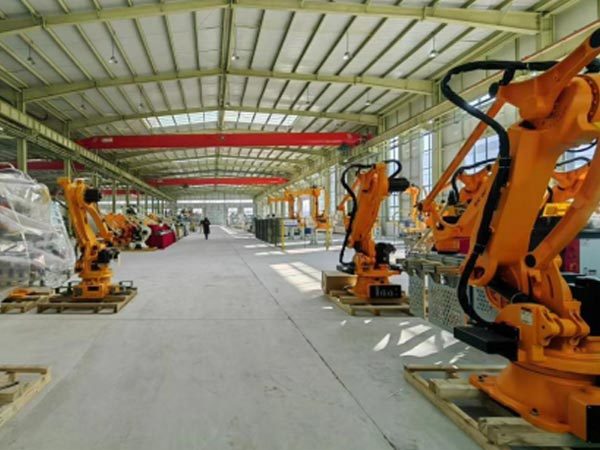The rise and future prospects of industrial robots
Release time:
2024-07-04
As a highly automated production equipment, industrial robots have been widely used in various fields of manufacturing. Their performance and operation make them an indispensable part of modern factories. At present, industrial robots have been widely used in automobile manufacturing, electronic assembly, instrument processing and other industries, improving production efficiency and quality.

With the continuous advancement of science and technology, human society is ushering in a new era - the manufacturing era. In this era, industrial robots have become an important force in promoting industrial development due to their flexible characteristics.
As a highly automated production equipment, industrial robots have been widely used in various fields of manufacturing. Their performance and operation make them an indispensable part of modern factories. At present, industrial robots have been widely used in automobile manufacturing, electronic assembly, instrument processing and other industries, improving production efficiency and quality.
The core technologies of industrial robots include mechanical design, sensor technology, control systems and artificial technology. The mechanical design allows the robot to have flexible arms and joints, allowing it to complete a variety of complex operational tasks. Sensor technology enables robots to sense the production environment in real time to ensure operation. The control system is the brain of the robot, responsible for receiving instructions, analyzing data and controlling the robot's movements. Artificial technology gives robots the ability to be autonomous and adapt to the environment, allowing them to continuously optimize work processes and improve production efficiency.
With the continuous development of artificial technology, industrial robots will have the ability to perceive and make decisions. They enable autonomous and optimized workflows, improving production efficiency and quality. At the same time, robots can also collaborate and interact more closely with humans to achieve a manufacturing model that integrates humans and machines.
Latest News
Column Palletizer: A High-Efficiency Solution Breaking Space Constraints
In modern factory layouts, space is often a key factor limiting production efficiency. Column palletizers, with their unique vertical structure design, are becoming the ideal choice for space-constrained production environments, redefining the possibilities of compact automated palletizing.
2025-12-08
Building an Efficient and Neat Automated Palletizing Line
Faced with tens of thousands of cartons of products daily, how can you achieve efficient and neat palletizing operations? Carton palletizers, with their professional performance and stable operation, are the best choice for modern warehousing and logistics!
2025-12-01
Vertical Palletizer: A High-Efficiency Palletizing Solution for Space-Confined Factories
In modern factory production, space utilization directly impacts overall operational efficiency. The vertical palletizer, with its unique vertical structure design, is becoming the ideal choice for companies with limited space!
2025-11-24
Industrial Robots Enable Unmanned Factories
In the wave of intelligent manufacturing, unmanned factories are moving from concept to reality. Industrial robots, as core equipment, are accelerating this revolutionary transformation with their superior automation capabilities.
2025-11-17
Corn Germ Palletizing Robot: The Intelligent Handling Expert Safeguarding Nutrition
In the corn deep processing industry, corn germ, as a high-nutritional-value raw material, presents a dual challenge of hygiene and efficiency in its palletizing process. Corn germ palletizing robots, with their professional performance, are becoming the preferred solution for industry upgrades!
2025-11-10
Column Robots: Intelligent Material Handling Experts with Big Impact in Small Spaces
In modern factories where space resources are increasingly scarce, column robots, with their unique structural advantages, are becoming a rising star in the field of intelligent material handling! This robot, designed specifically for compact spaces, is redefining the infinite possibilities of efficient warehousing.
2025-11-03




